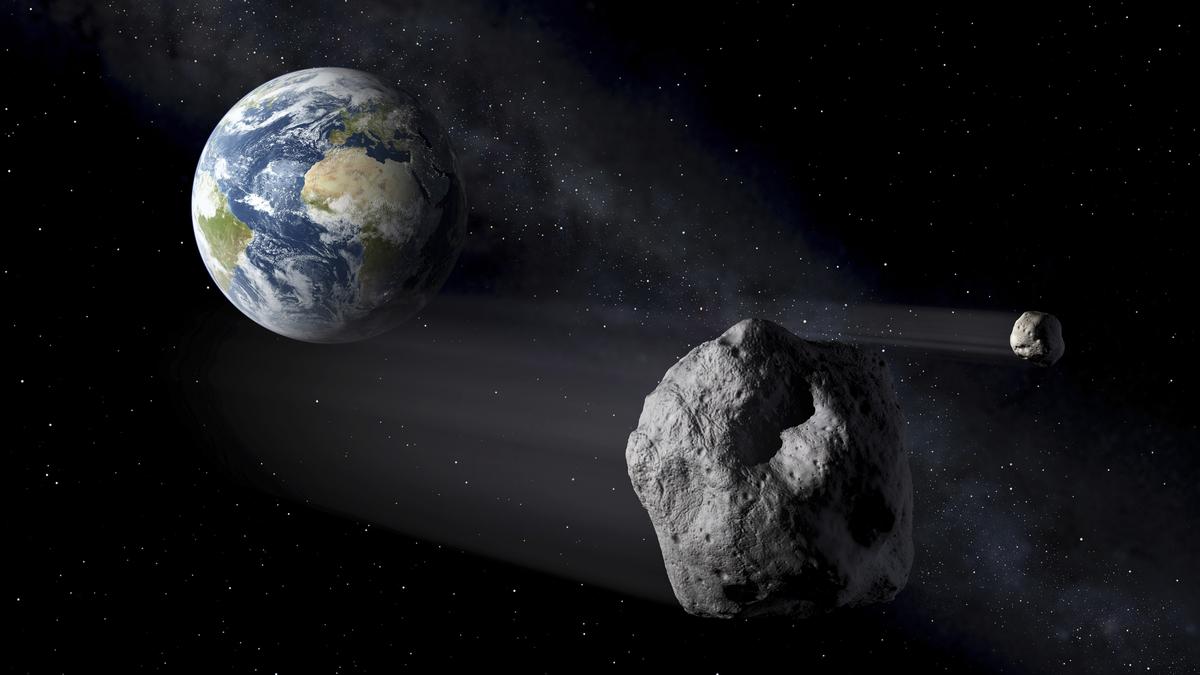
Asteroid 2024 MK Soars Past Earth: An Insight into the Rocky Worlds of Our Solar System
In a stunning artistic rendering, two asteroids are shown soaring past Earth. One of these celestial bodies, known as 2024 MK, will safely glide by our planet on Saturday, June 29, 2024. It was first spotted by South African astronomers just two weeks ago and is estimated to be approximately 393 feet to 853 feet (120 to 260 meters) wide. The asteroid will make its closest approach to Earth at 9:46 AM EST (13:46 GMT), passing by at about three-quarters the distance from Earth to the moon.
The majority of asteroids in our solar system can be found in the Asteroid Belt, a region located between Mars and Jupiter. After Jupiter formed, its powerful gravitational forces prevented these space rocks from forming into more planetary bodies, leaving behind the Asteroid Belt as a rocky world in its place.
The largest known asteroid is Ceres, which is roughly one-quarter the size of the moon. Asteroids are primarily composed of rock, with some containing clay, silicate, and different metals such as nickel and iron.
NASA’s OSIRIS-REx mission has been responsible for collecting samples from the asteroid Bennu and bringing them back to Earth for study. In 2015, scientists discovered water gullies on the asteroid Vesta that were caused by the impact of a smaller asteroid melting trapped water ice and trickling it onto the larger asteroid, leaving behind water trails in the rocks.

